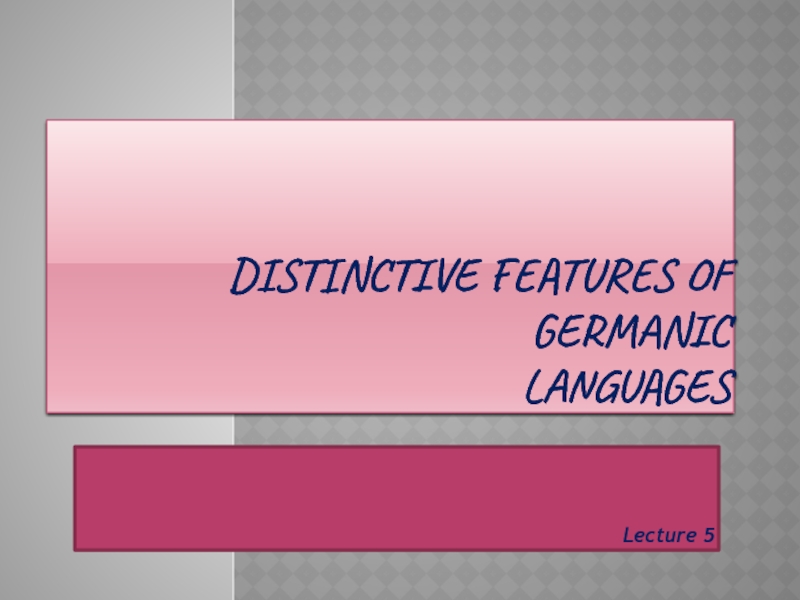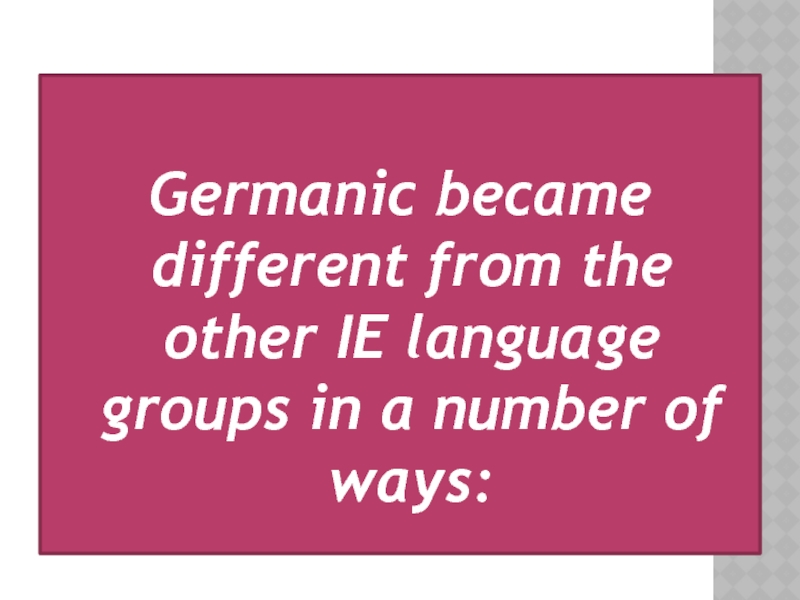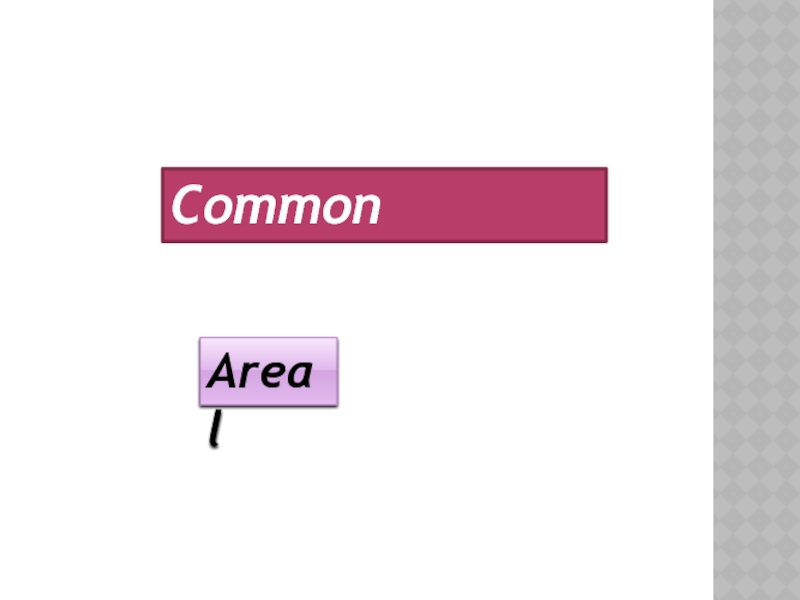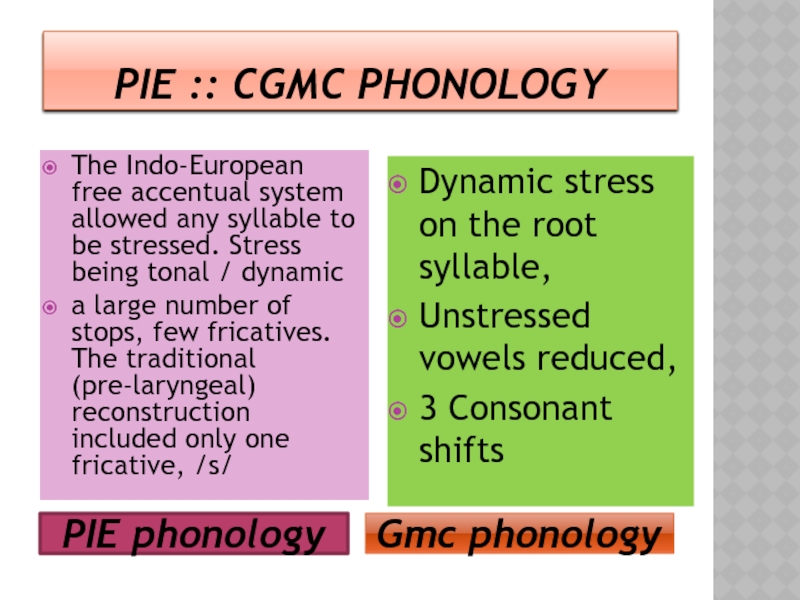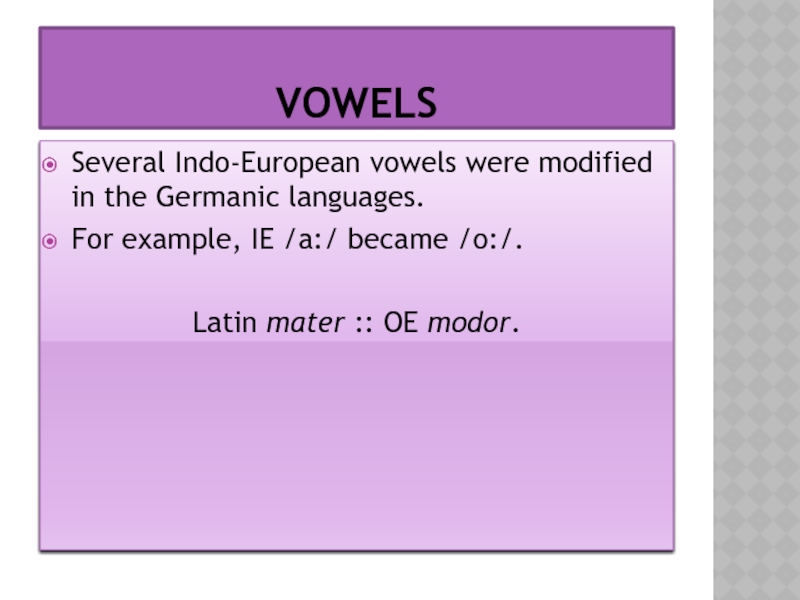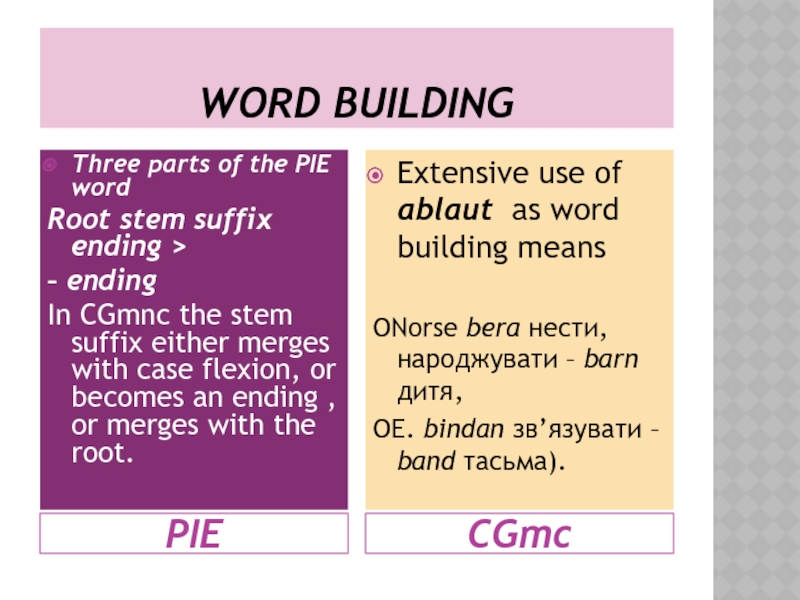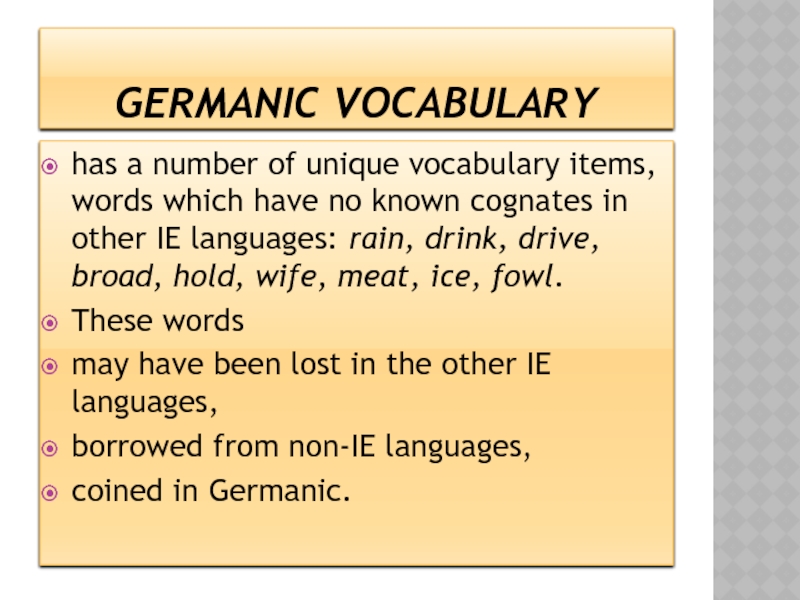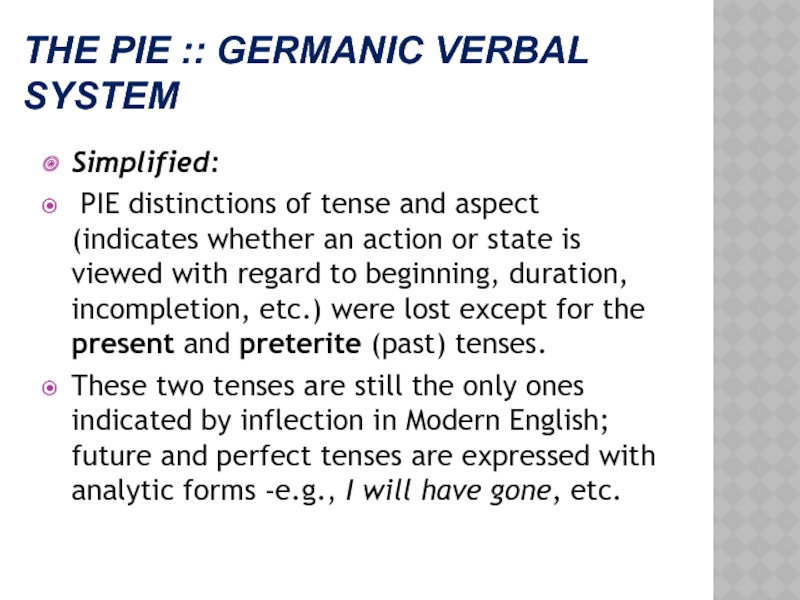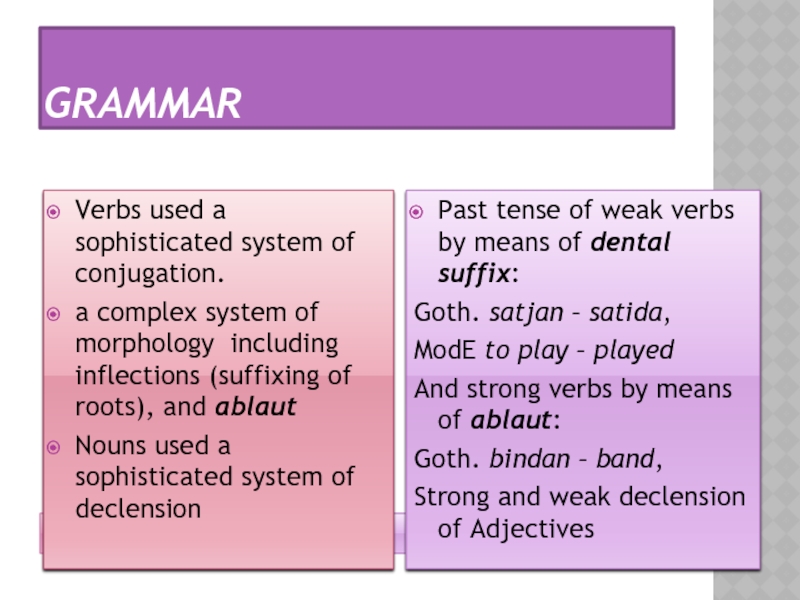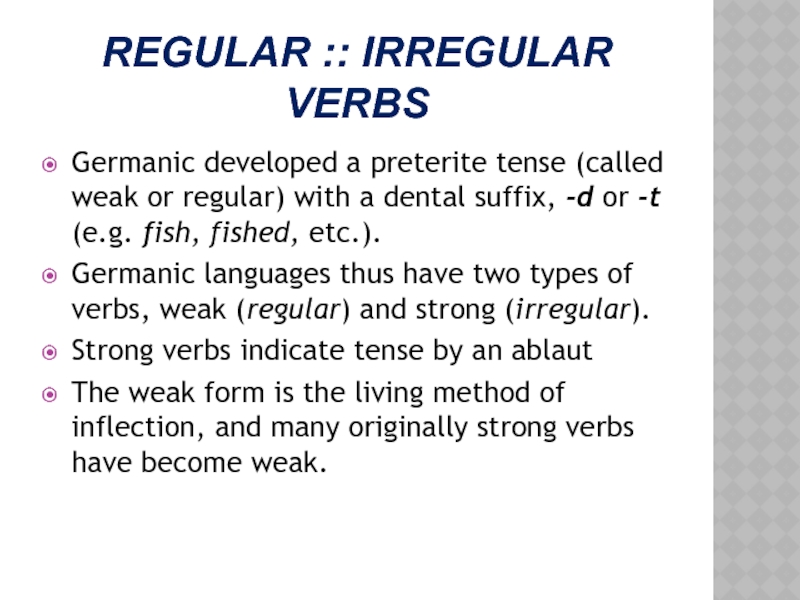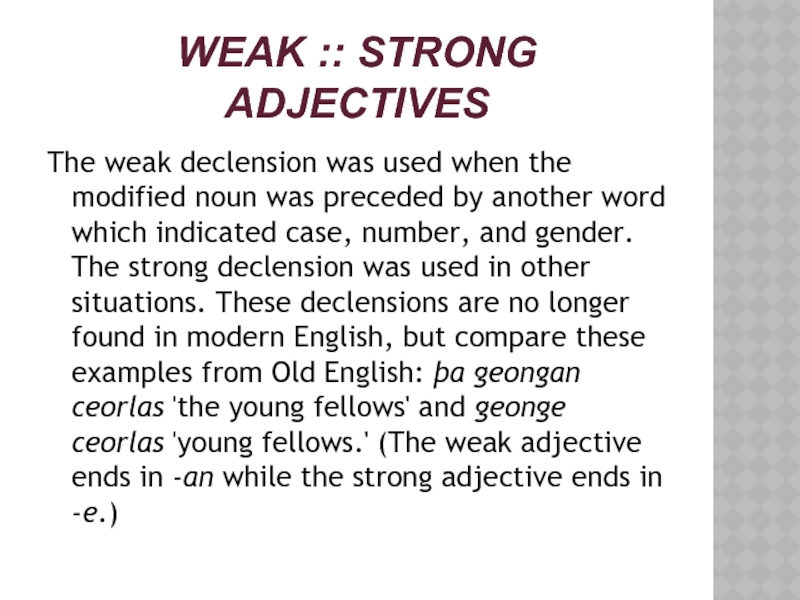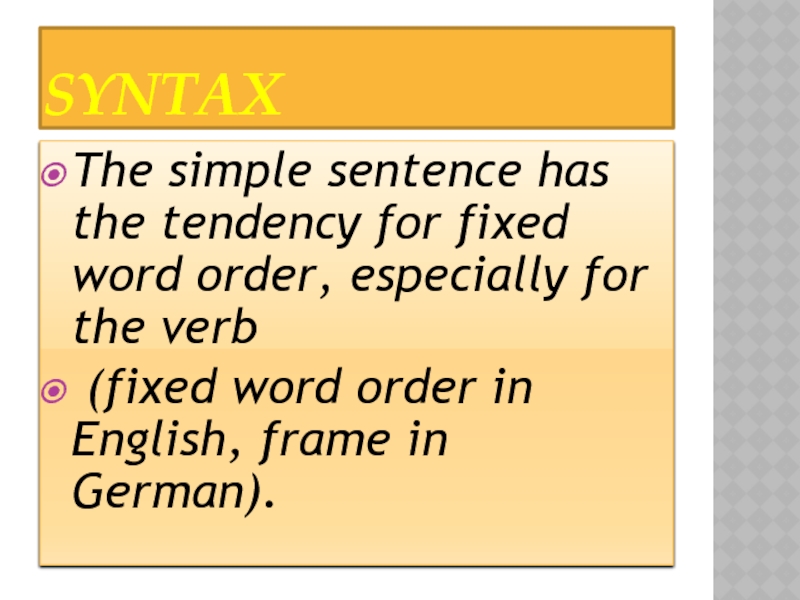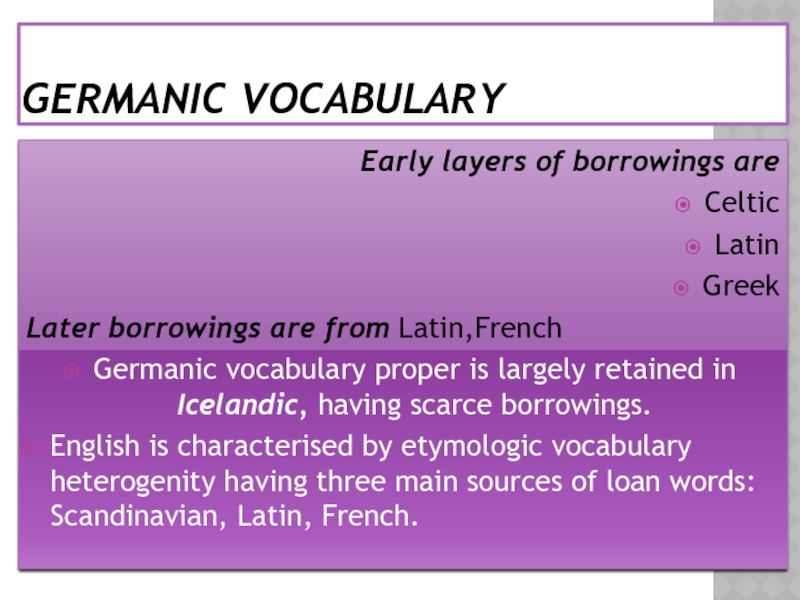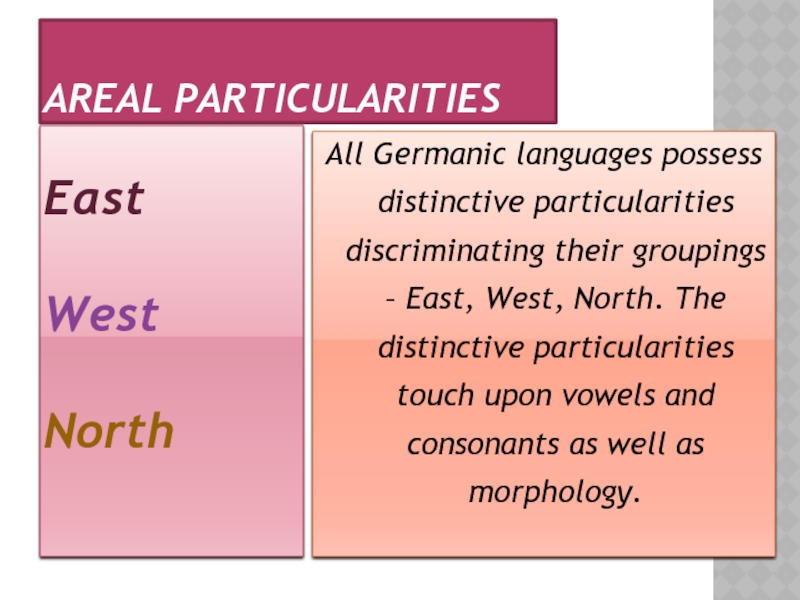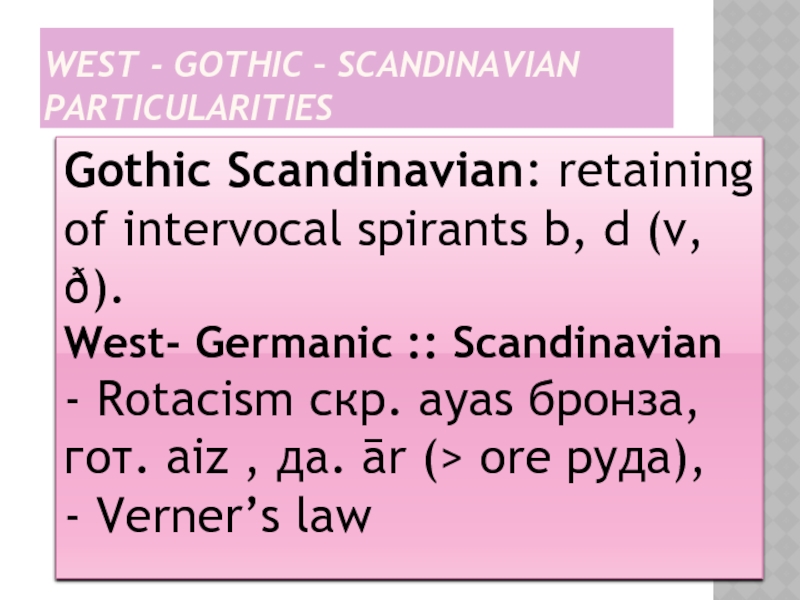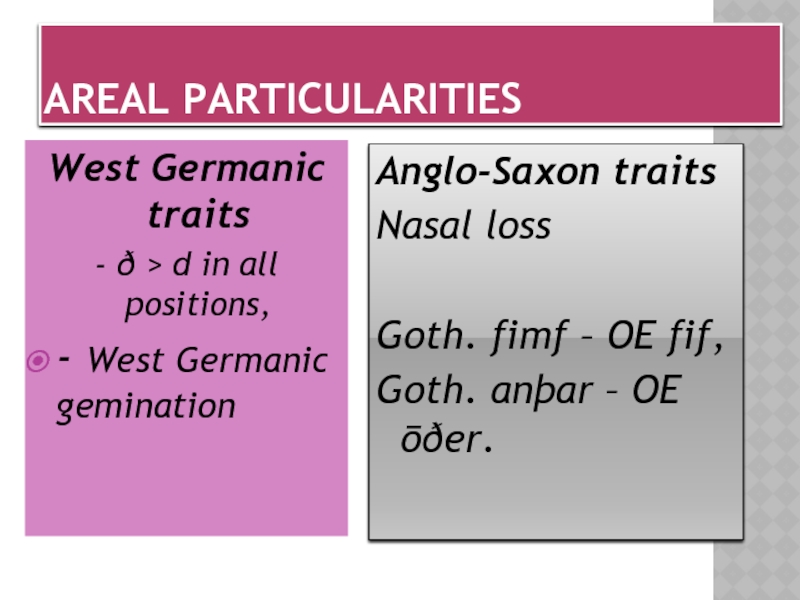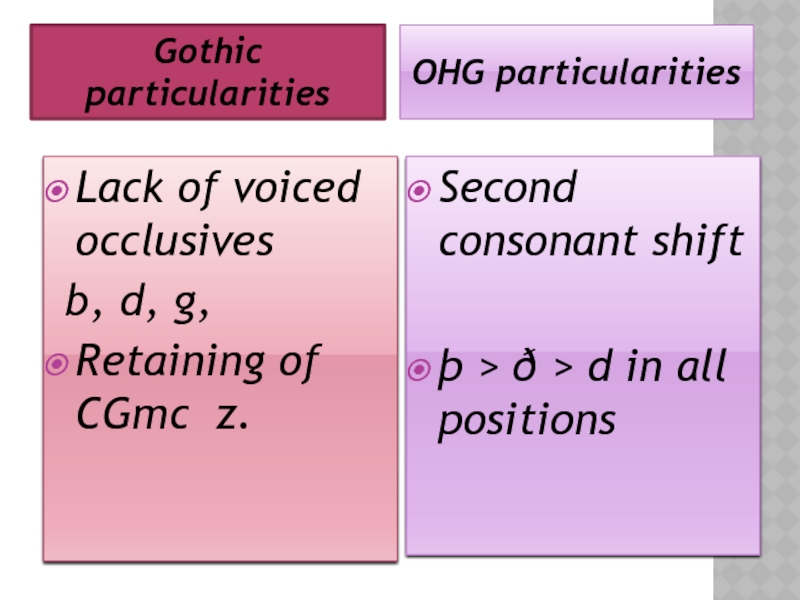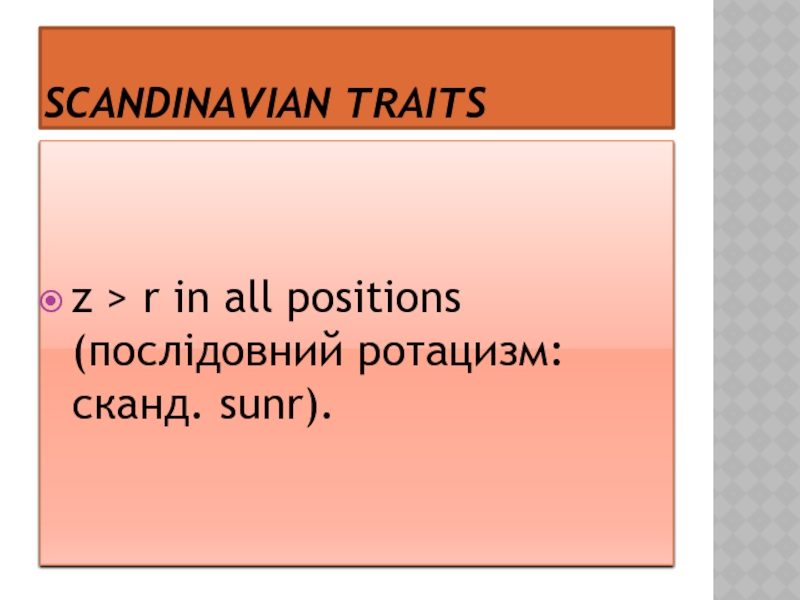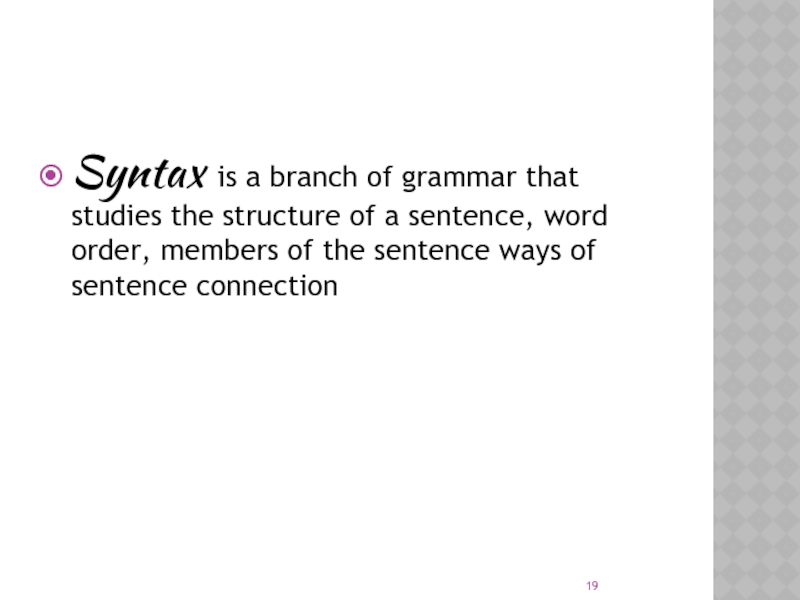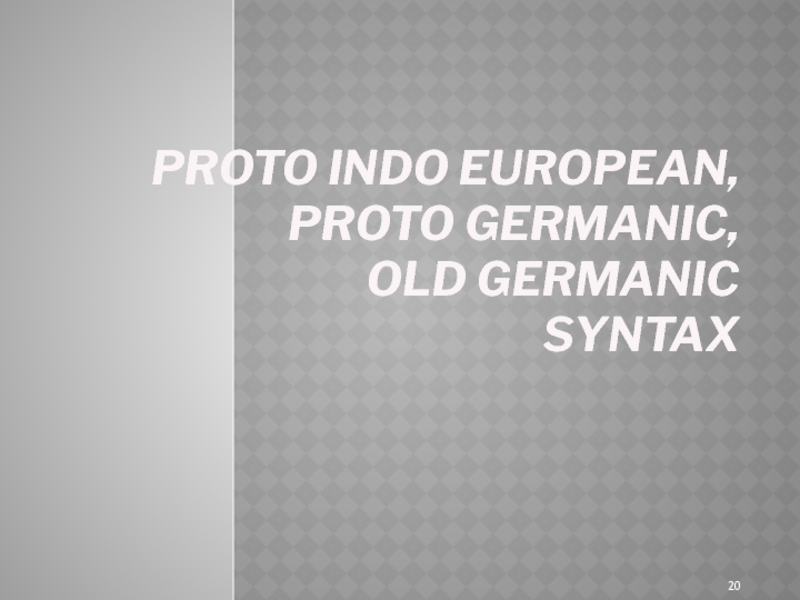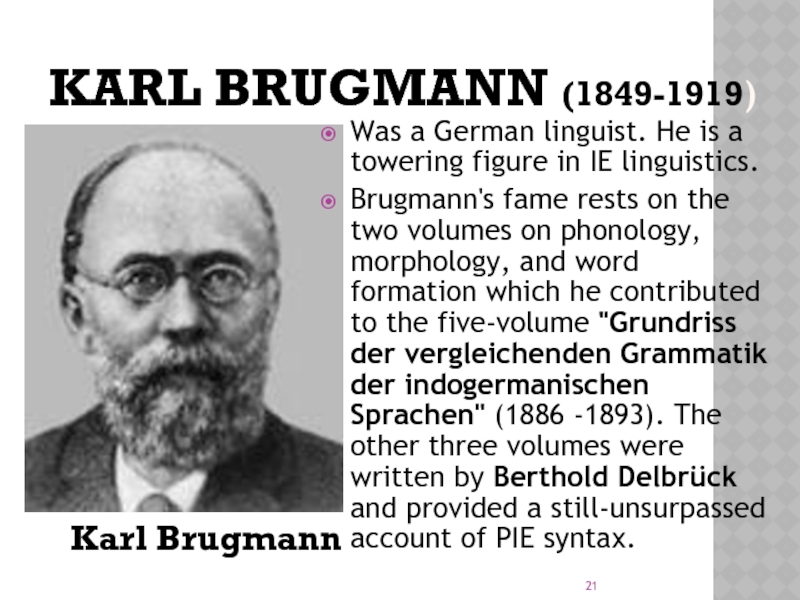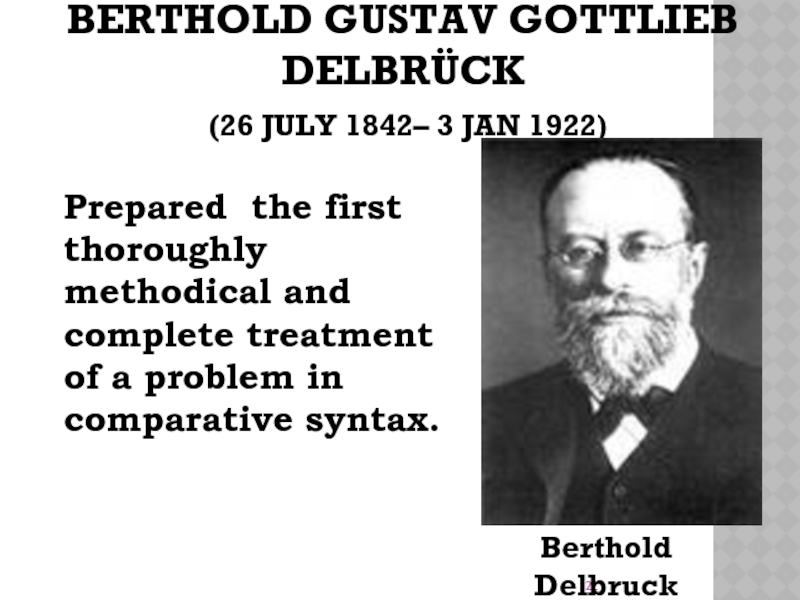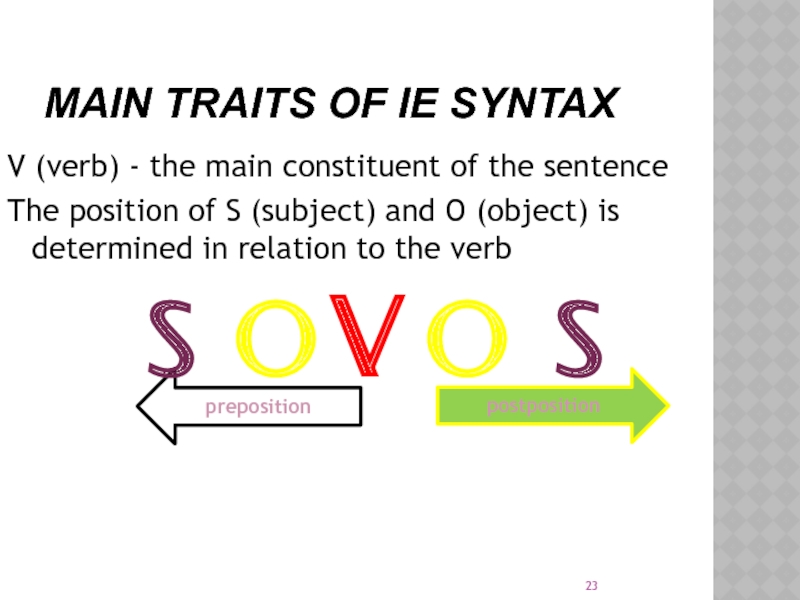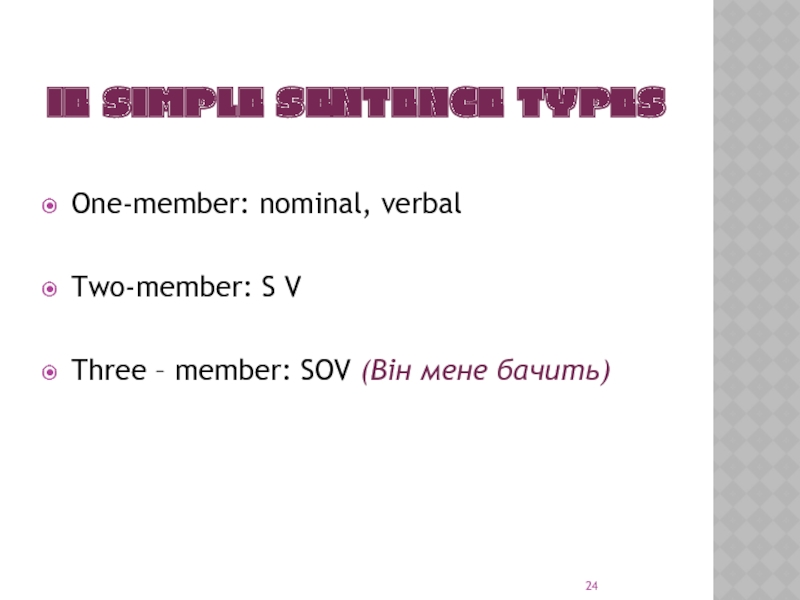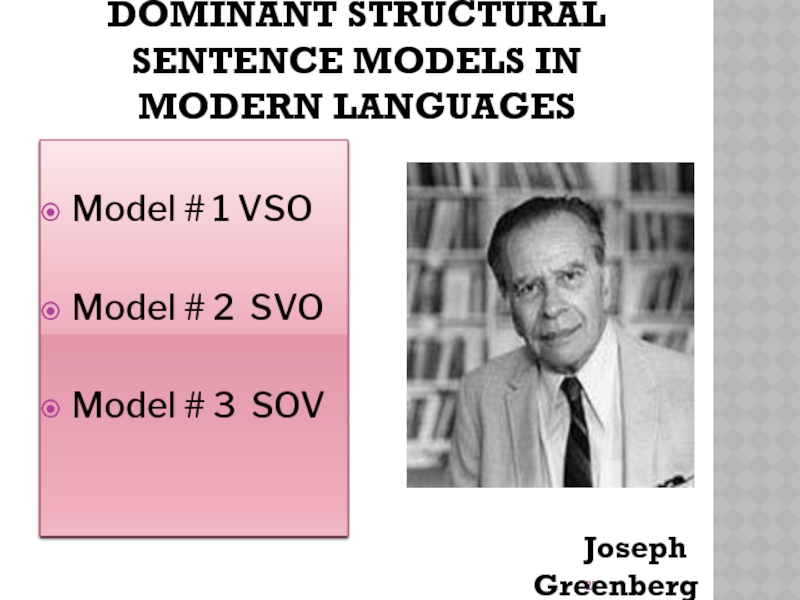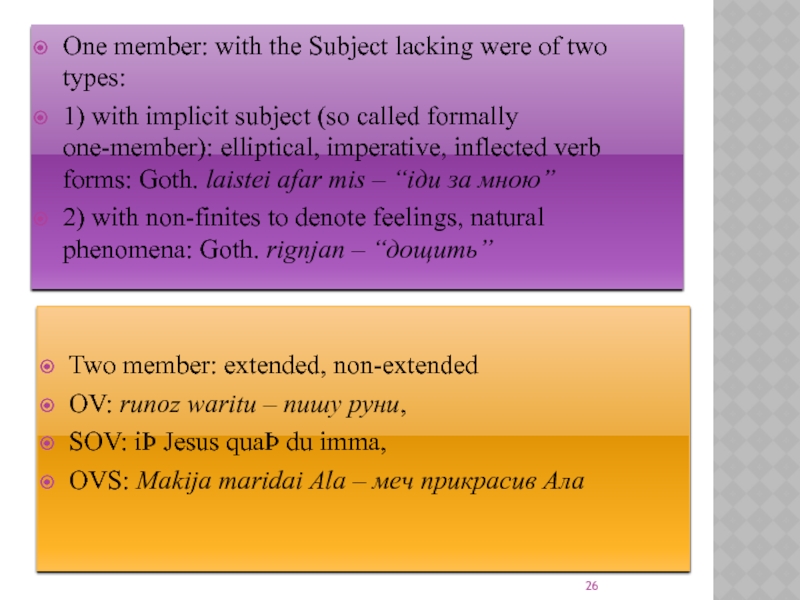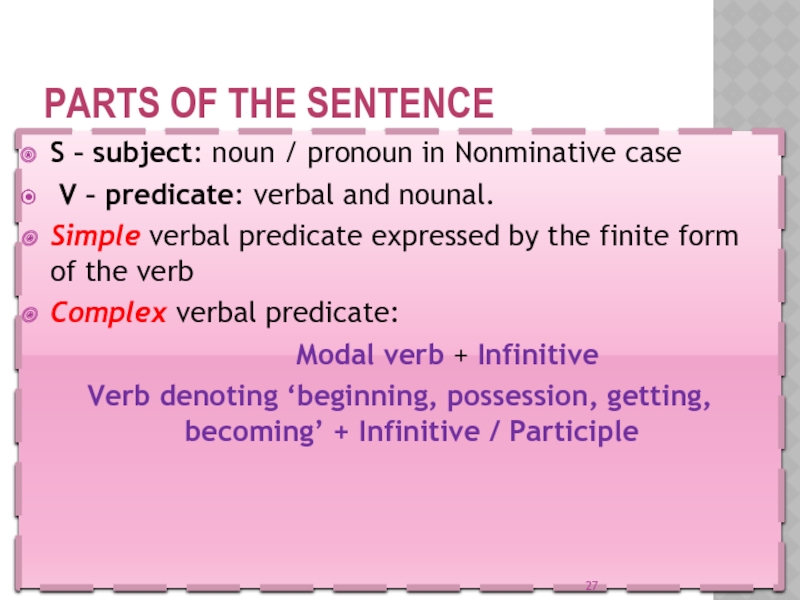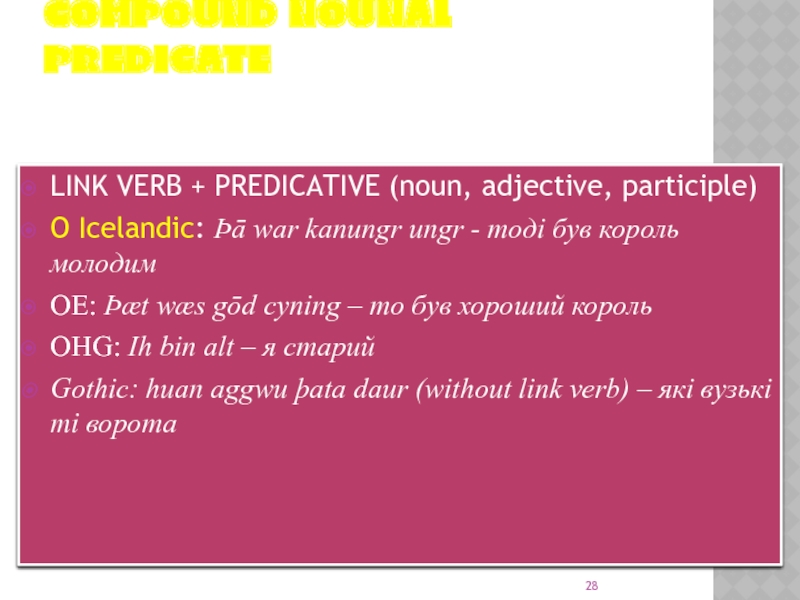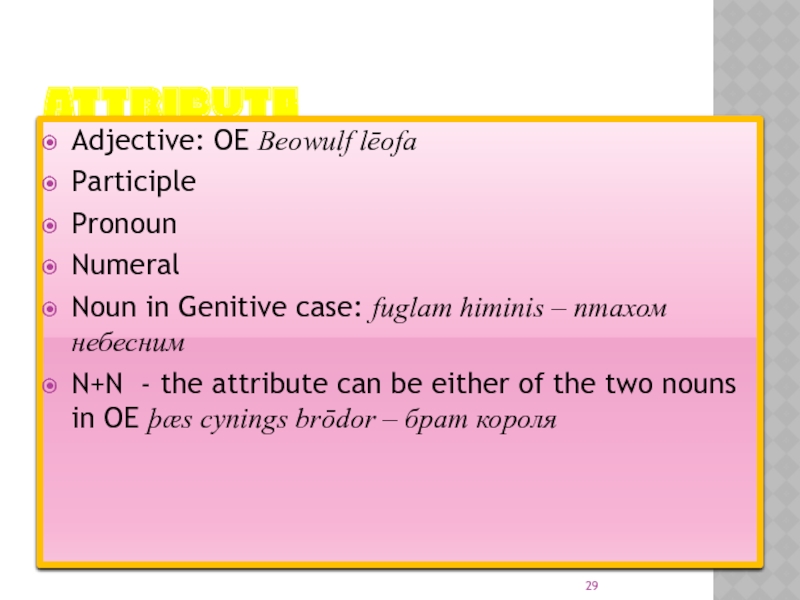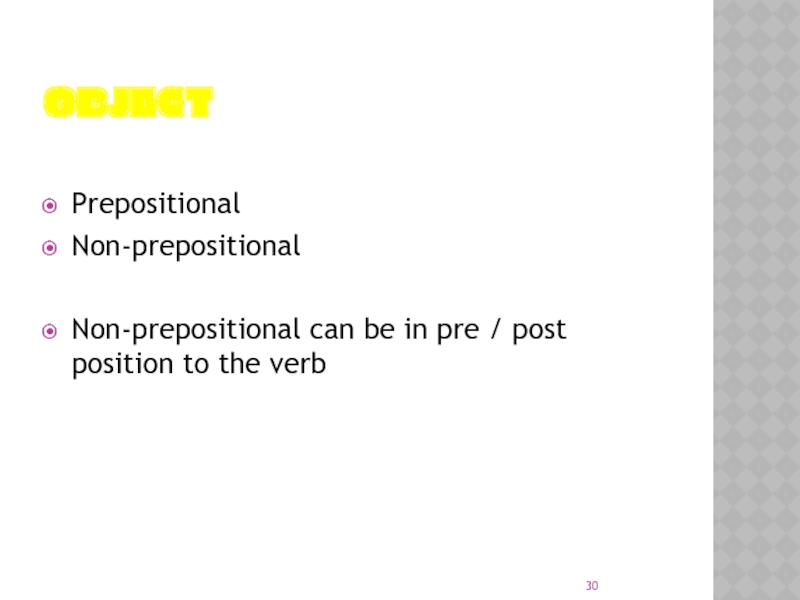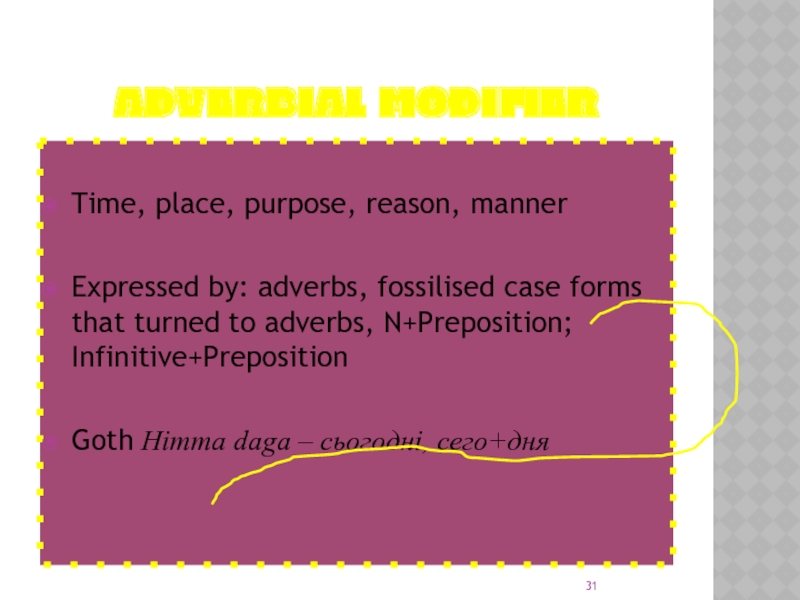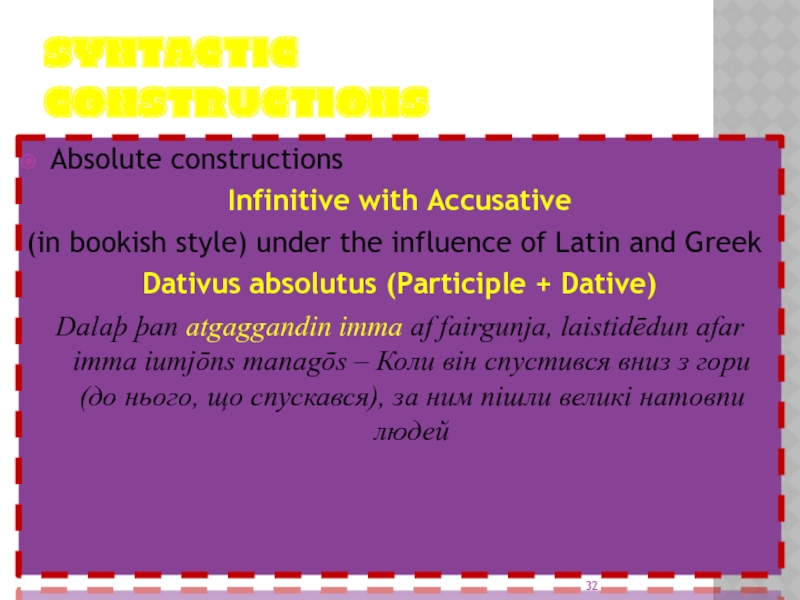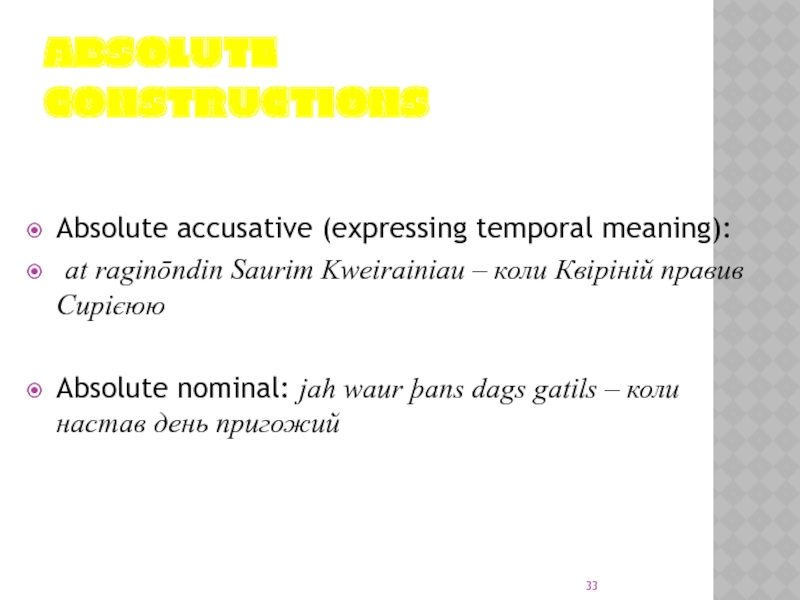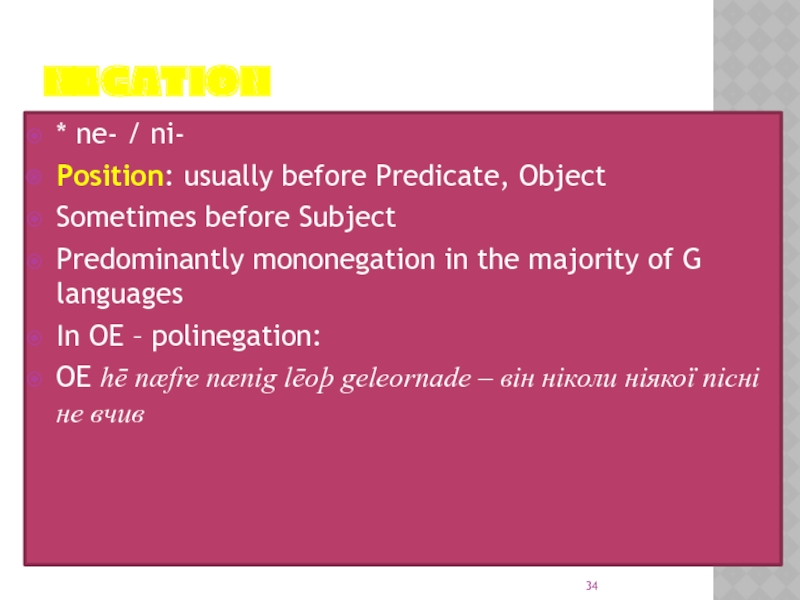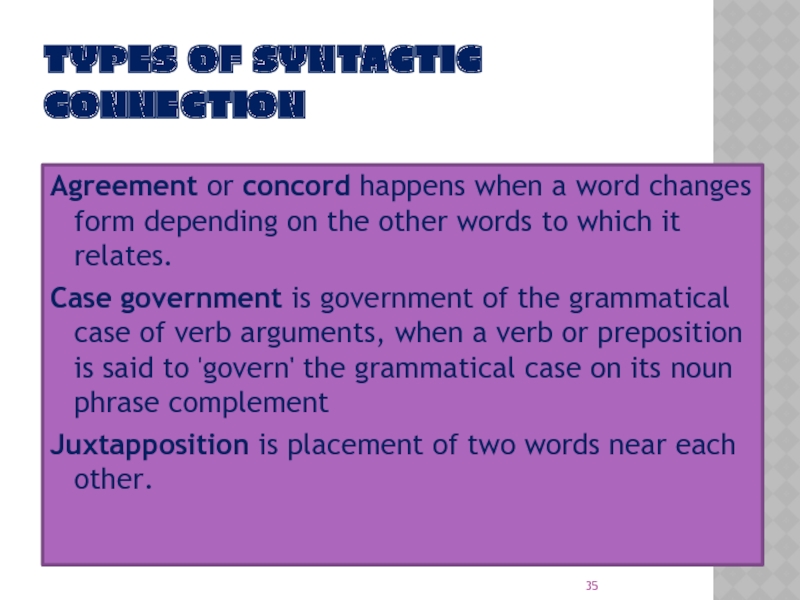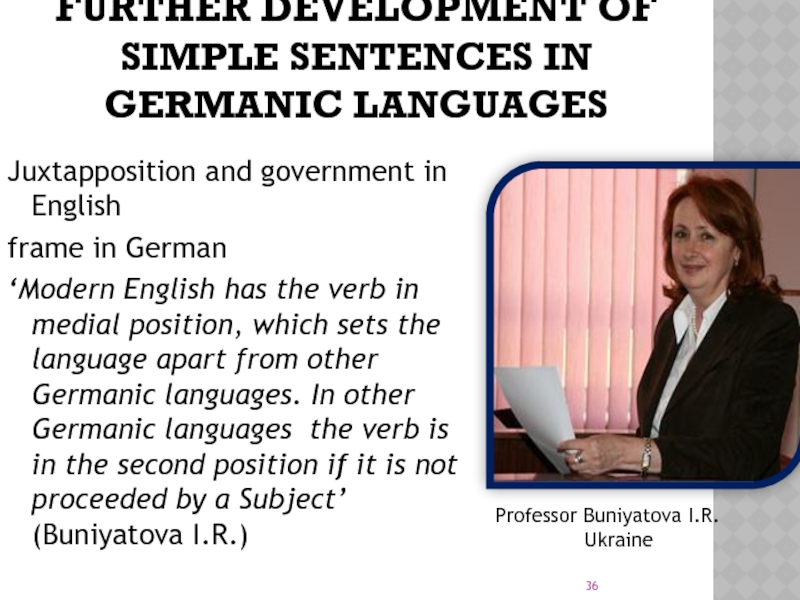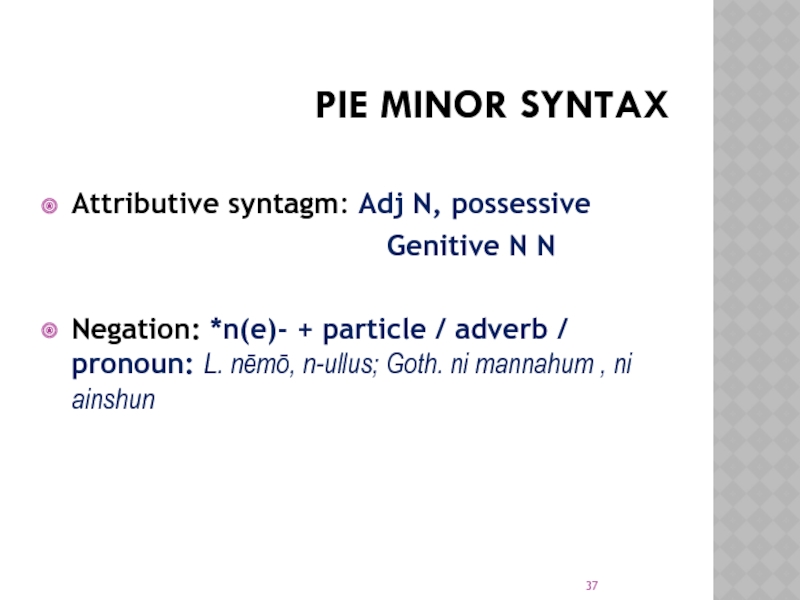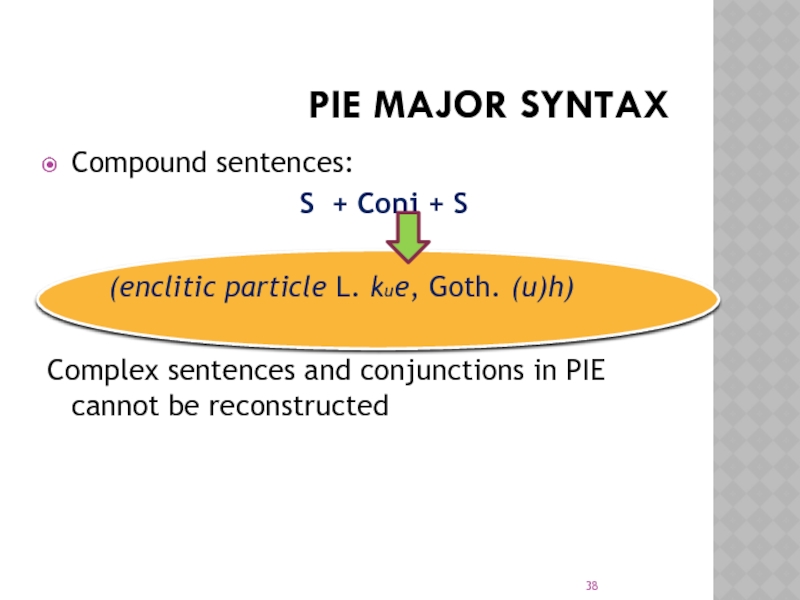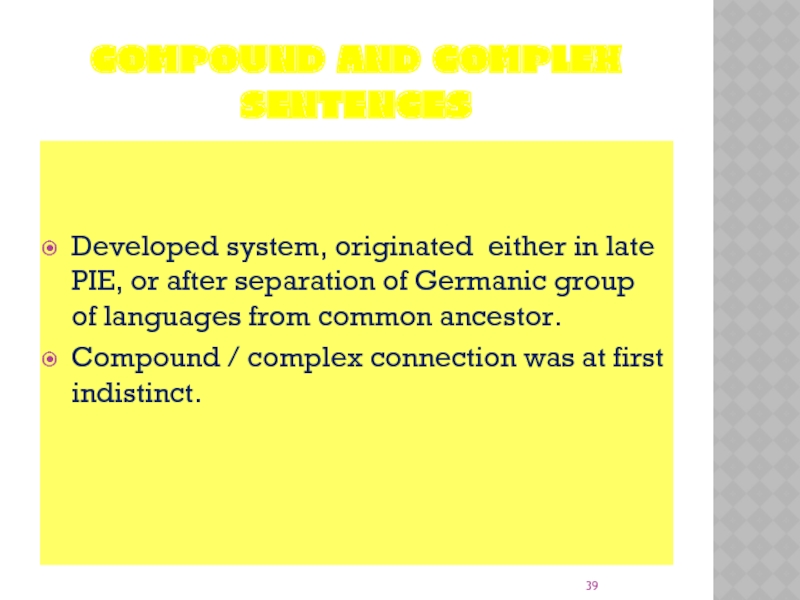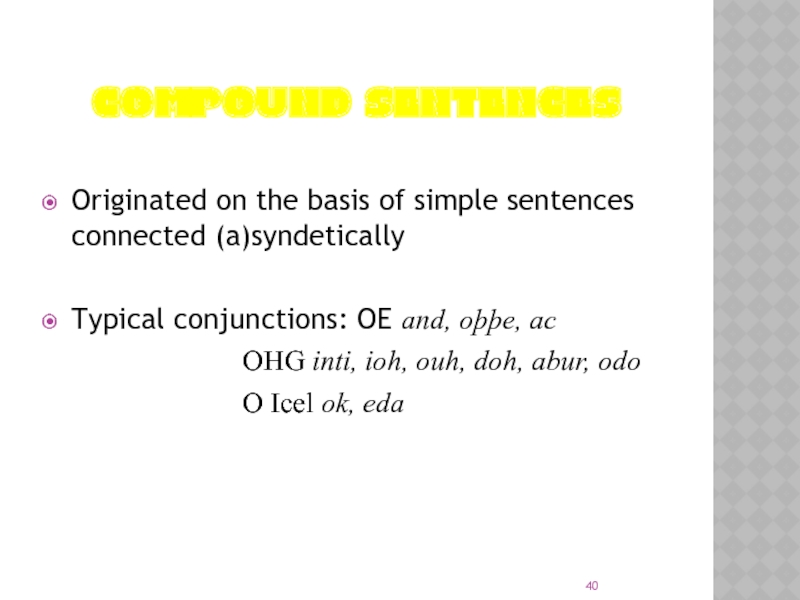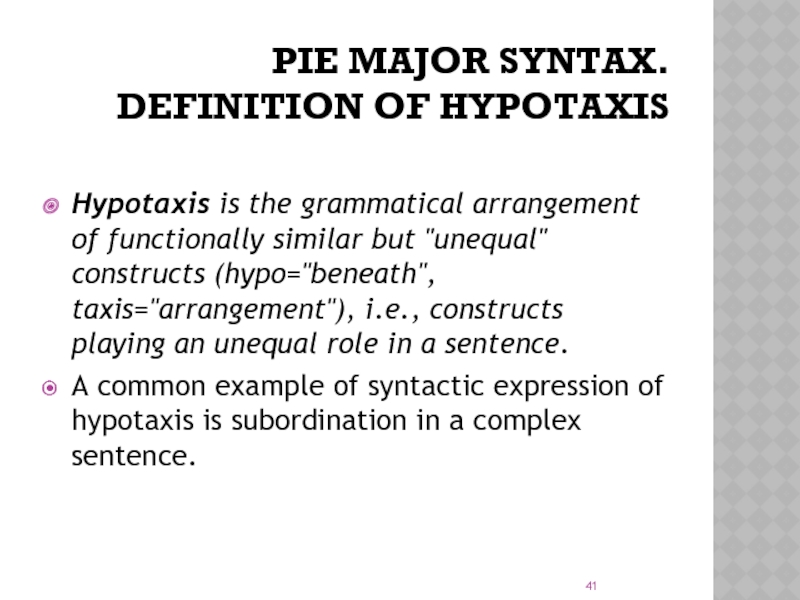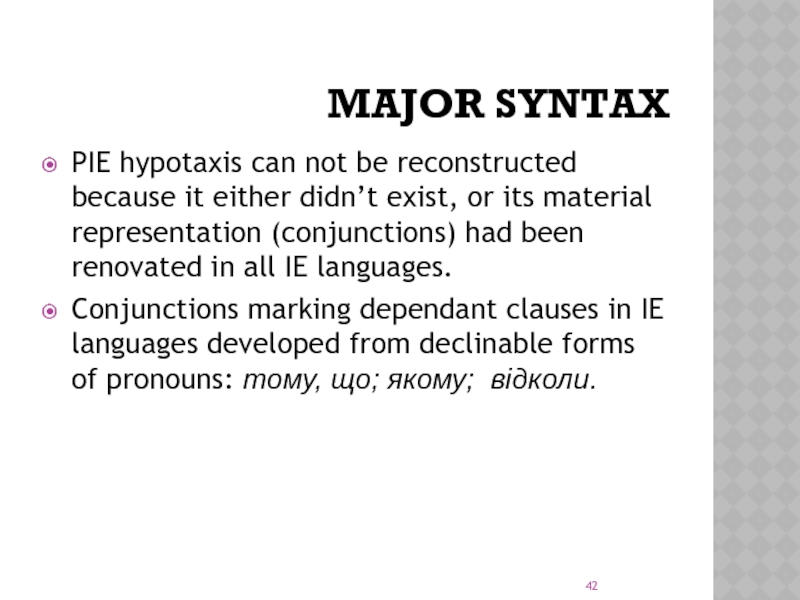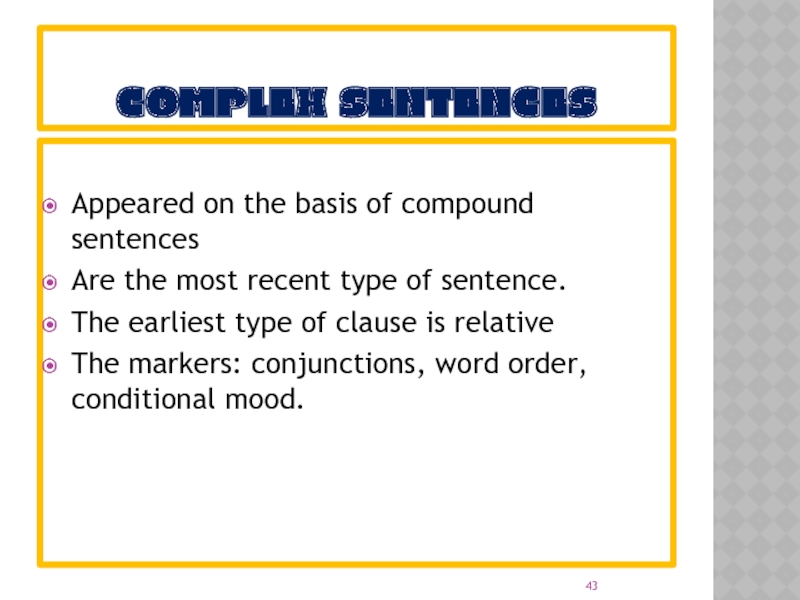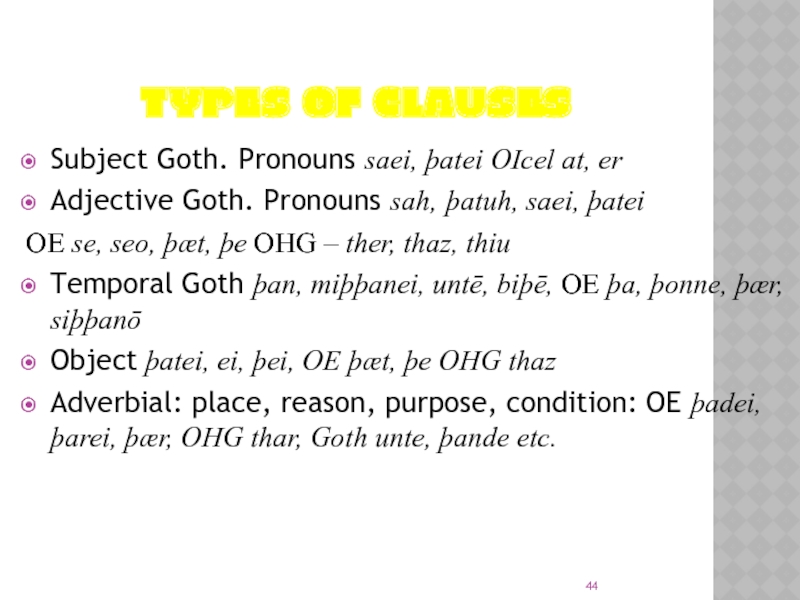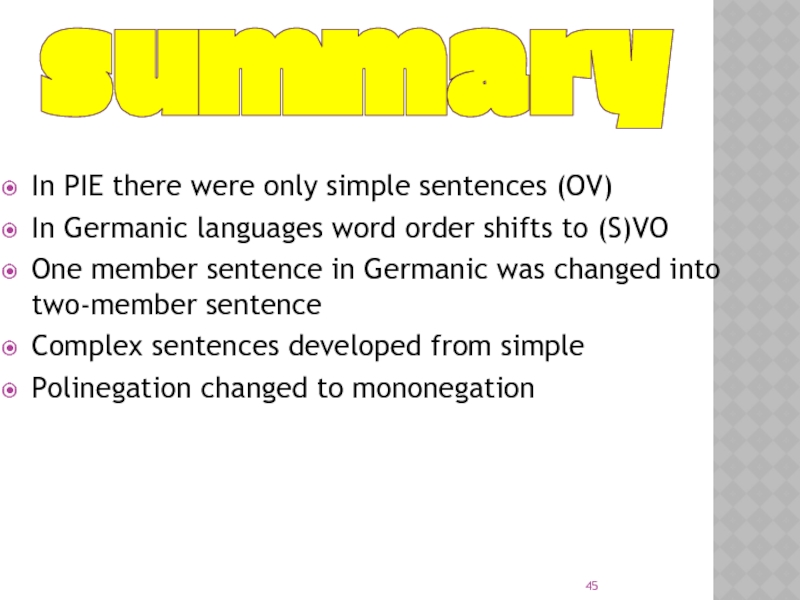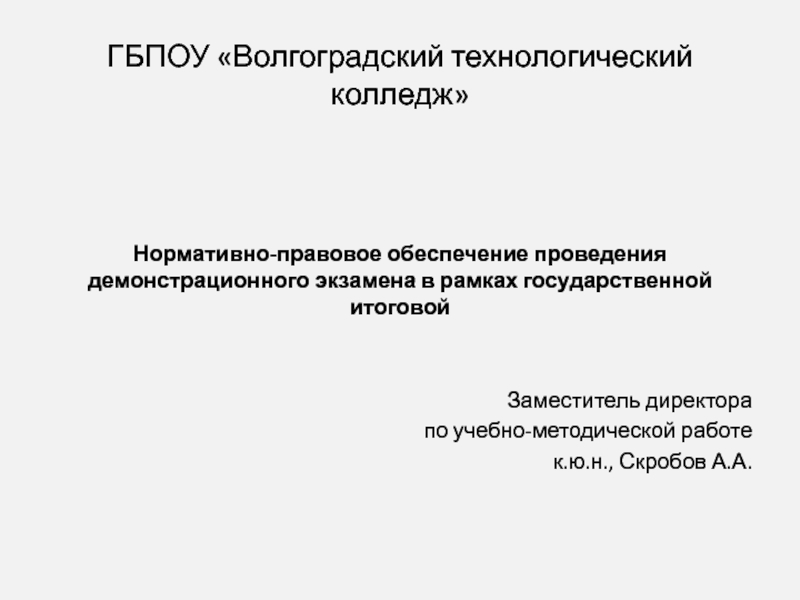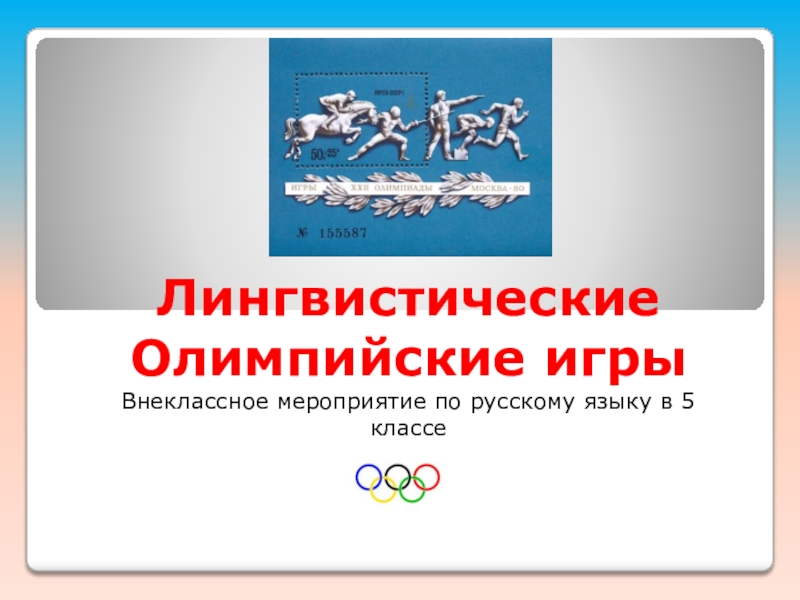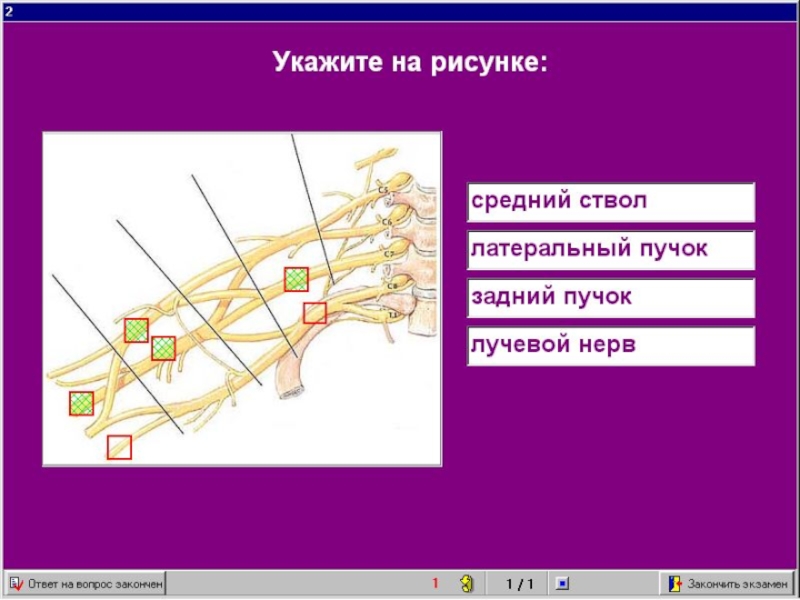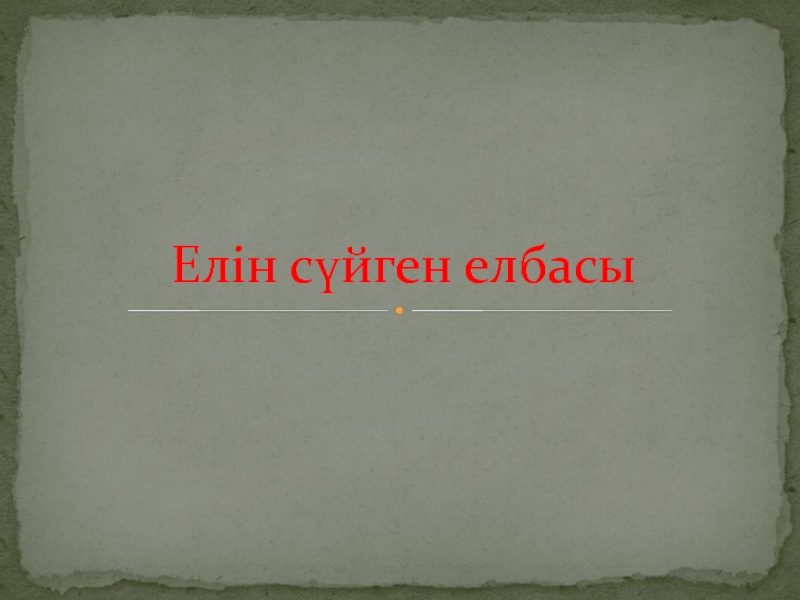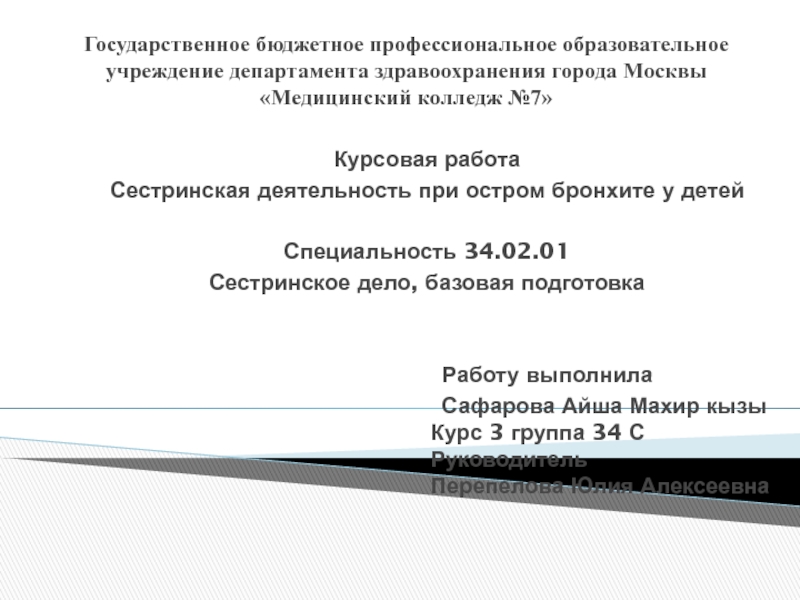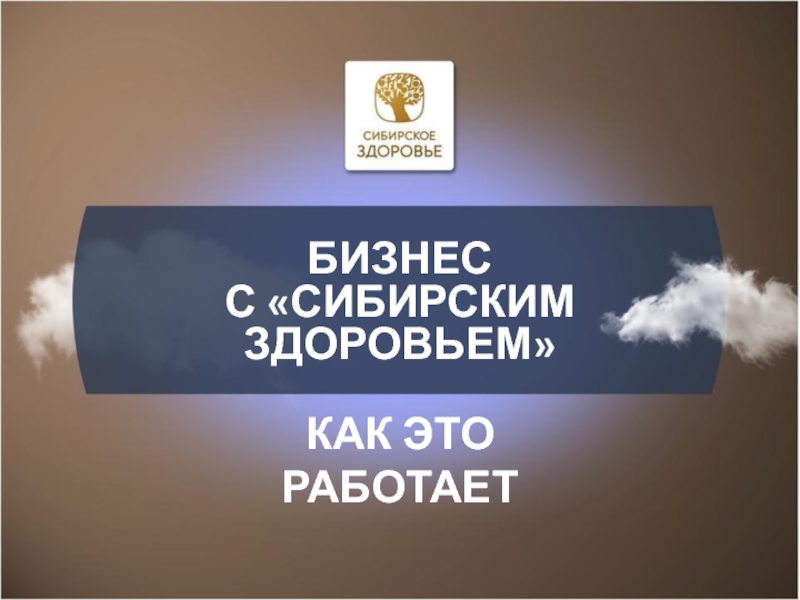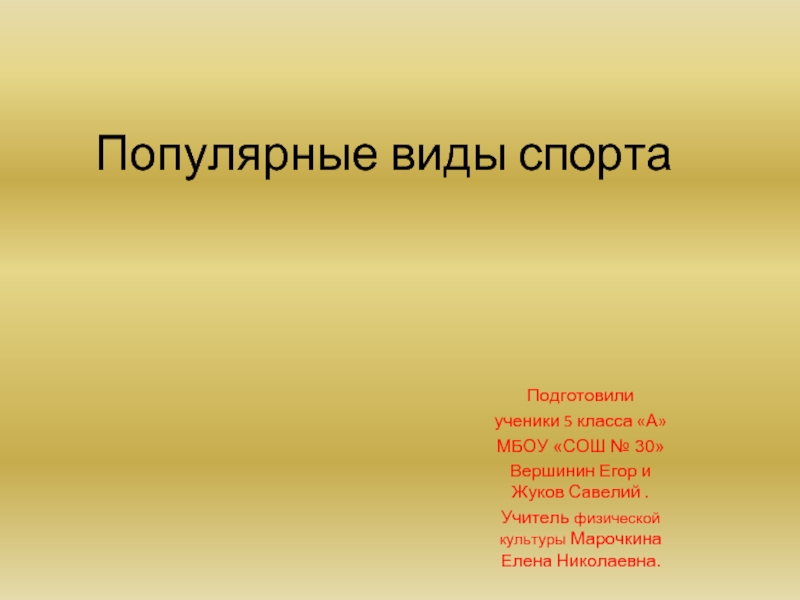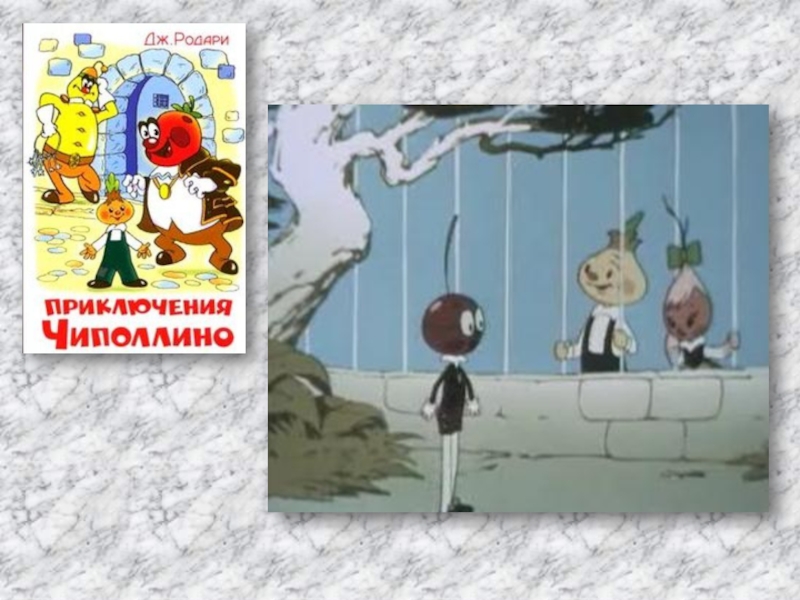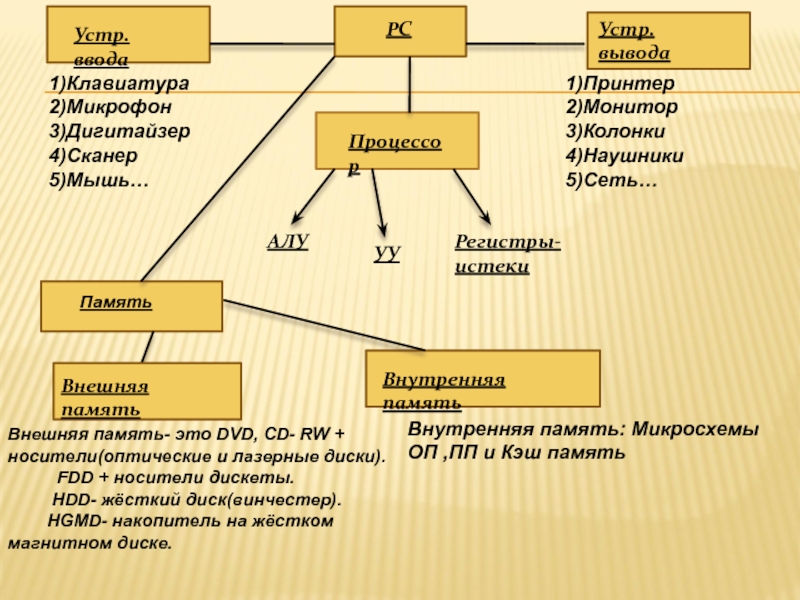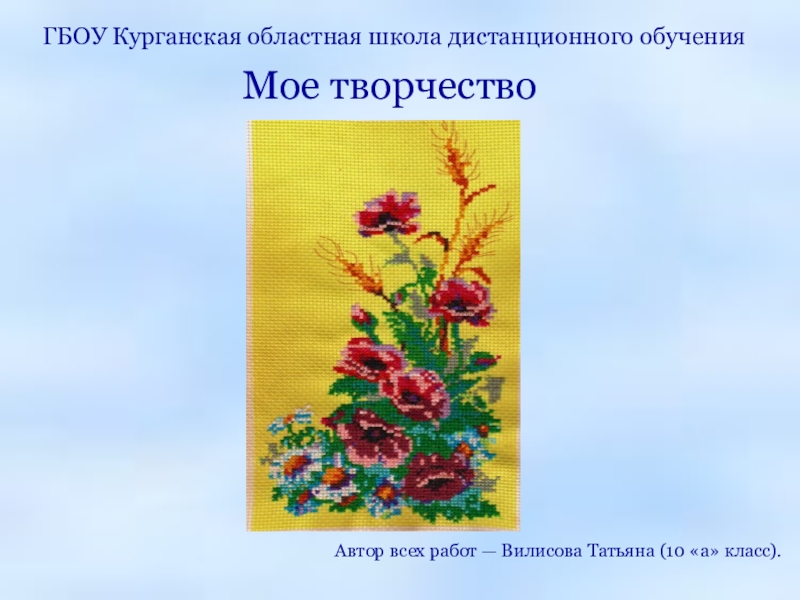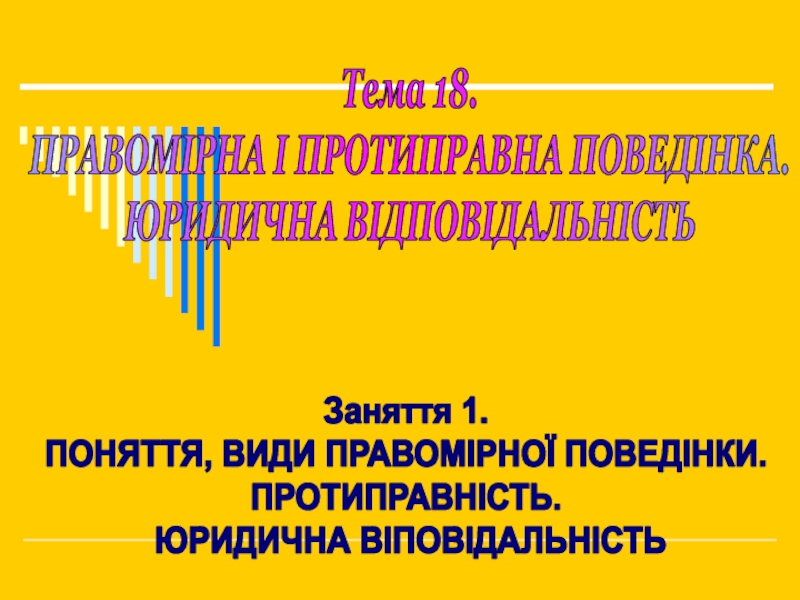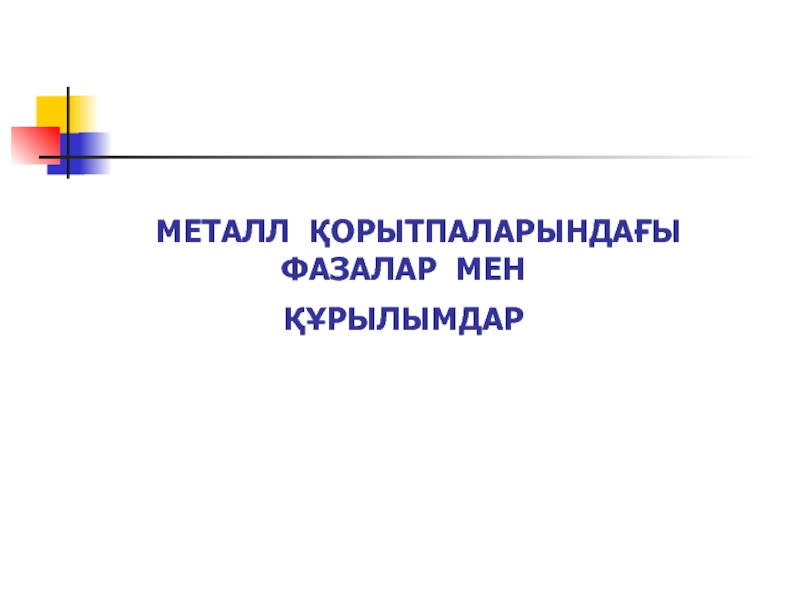Разделы презентаций
- Разное
- Английский язык
- Астрономия
- Алгебра
- Биология
- География
- Геометрия
- Детские презентации
- Информатика
- История
- Литература
- Математика
- Медицина
- Менеджмент
- Музыка
- МХК
- Немецкий язык
- ОБЖ
- Обществознание
- Окружающий мир
- Педагогика
- Русский язык
- Технология
- Физика
- Философия
- Химия
- Шаблоны, картинки для презентаций
- Экология
- Экономика
- Юриспруденция
DISTINCTIVE FEATURES OF GERMANIC languages
Содержание
- 1. DISTINCTIVE FEATURES OF GERMANIC languages
- 2. Germanic became different from the other IE language groups in a number of ways:
- 3. Common Germanic Areal
- 4. PIE :: CGМС phonology PIE phonology Gmc
- 5. Vowels Several Indo-European vowels were modified in
- 6. Word building PIECGmcThree parts of the PIE
- 7. GERMANIC Vocabulary has a number of unique
- 8. The PIE :: Germanic verbal system Simplified:
- 9. Grammar PIECGmcVerbs used a sophisticated system of
- 10. Regular :: irregular verbsGermanic developed a preterite
- 11. Weak :: strong adjectivesThe weak declension was
- 12. Syntax The simple sentence has the tendency
- 13. Germanic Vocabulary Early layers of borrowings are
- 14. Areal particularitiesEast West North All Germanic languages
- 15. West - Gothic – Scandinavian particularitiesGothic Scandinavian:
- 16. Areal particularitiesWest Germanic traits- ð > d
- 17. Gothic particularitiesOHG particularitiesLack of voiced occlusives b,
- 18. Scandinavian traits z > r in all positions (послiдовний ротацизм: сканд. sunr).
- 19. Syntax is a branch of grammar that
- 20. Proto Indo European, Proto Germanic, Old Germanic SYNTAX
- 21. Karl Brugmann (1849-1919) Was a German linguist.
- 22. Berthold Gustav Gottlieb Delbrück (26 July
- 23. postpositionprepositionMain Traits of IE SyntaxV (verb) -
- 24. IE Simple sentence typesOne-member: nominal, verbalTwo-member: S VThree – member: SOV (Він мене бачить)
- 25. Dominant structural sentence models in modern languagesModel
- 26. Old Germanic simple sentence One member: with
- 27. Parts of the sentenceS – subject: noun
- 28. Compound nounal predicate LINK VERB
- 29. attributeAdjective: OE Beowulf lēofaParticiplePronounNumeral Noun in Genitive
- 30. Object Prepositional Non-prepositionalNon-prepositional can be in pre / post position to the verb
- 31. Adverbial modifierTime, place, purpose, reason, mannerExpressed by:
- 32. Syntactic constructionsAbsolute constructions Infinitive with Accusative (in
- 33. Absolute constructionsAbsolute accusative (expressing temporal meaning): at
- 34. Negation * ne- / ni-Position: usually before
- 35. Types of syntactic connection Agreement or concord
- 36. Further development of simple sentences in Germanic
- 37. PIE Minor SyntaxAttributive syntagm: Adj N, possessive
- 38. PIE Major SyntaxCompound sentences:
- 39. Compound and Complex sentences Developed system, originated
- 40. Compound sentences Originated on the basis of
- 41. PIE Major Syntax. Definition of Hypotaxis
- 42. Major syntax PIE hypotaxis can not be
- 43. Complex sentencesAppeared on the basis of compound
- 44. Types of clausesSubject Goth. Pronouns saei, þatei
- 45. summaryIn PIE there were only simple sentences
- 46. Скачать презентанцию
Слайды и текст этой презентации
Слайд 4PIE :: CGМС phonology
PIE phonology
Gmc phonology
The Indo-European free
accentual system allowed any syllable to be stressed. Stress being
tonal / dynamica large number of stops, few fricatives. The traditional (pre-laryngeal) reconstruction included only one fricative, /s/
Dynamic stress on the root syllable,
Unstressed vowels reduced,
3 Consonant shifts
Слайд 5Vowels
Several Indo-European vowels were modified in the Germanic languages.
For example, IE /a:/ became /o:/.
Latin mater :: OE
modor.Слайд 6Word building
PIE
CGmc
Three parts of the PIE word
Root stem suffix
ending >
– ending
In CGmnc the stem suffix either merges
with case flexion, or becomes an ending , or merges with the root. Extensive use of ablaut as word building means
ONorse bera нести, народжувати – barn дитя,
ОЕ. bindan зв’язувати – band тасьма).
Слайд 7GERMANIC Vocabulary
has a number of unique vocabulary items, words
which have no known cognates in other IE languages: rain,
drink, drive, broad, hold, wife, meat, ice, fowl.These words
may have been lost in the other IE languages,
borrowed from non-IE languages,
coined in Germanic.
Слайд 8The PIE :: Germanic verbal system
Simplified:
PIE distinctions of
tense and aspect (indicates whether an action or state is
viewed with regard to beginning, duration, incompletion, etc.) were lost except for the present and preterite (past) tenses.These two tenses are still the only ones indicated by inflection in Modern English; future and perfect tenses are expressed with analytic forms -e.g., I will have gone, etc.
Слайд 9Grammar
PIE
CGmc
Verbs used a sophisticated system of conjugation.
a complex system
of morphology including inflections (suffixing of roots), and ablaut
Nouns used
a sophisticated system of declensionPast tense of weak verbs by means of dental suffix:
Goth. satjan – satida,
ModE to play – played
And strong verbs by means of ablaut:
Goth. bindan – band,
Strong and weak declension of Adjectives
Слайд 10Regular :: irregular verbs
Germanic developed a preterite tense (called weak
or regular) with a dental suffix, -d or -t (e.g.
fish, fished, etc.).Germanic languages thus have two types of verbs, weak (regular) and strong (irregular).
Strong verbs indicate tense by an ablaut
The weak form is the living method of inflection, and many originally strong verbs have become weak.
Слайд 11Weak :: strong adjectives
The weak declension was used when the
modified noun was preceded by another word which indicated case,
number, and gender. The strong declension was used in other situations. These declensions are no longer found in modern English, but compare these examples from Old English: þa geongan ceorlas 'the young fellows' and geonge ceorlas 'young fellows.' (The weak adjective ends in -an while the strong adjective ends in -e.)Слайд 12Syntax
The simple sentence has the tendency for fixed word
order, especially for the verb
(fixed word order in English,
frame in German).Слайд 13Germanic Vocabulary
Early layers of borrowings are
Celtic
Latin
Greek
Later
borrowings are from Latin,French
Germanic vocabulary proper is largely retained
in Icelandic, having scarce borrowings. English is characterised by etymologic vocabulary heterogenity having three main sources of loan words: Scandinavian, Latin, French.
Слайд 14Areal particularities
East
West
North
All Germanic languages possess distinctive particularities
discriminating their groupings – East, West, North. The distinctive particularities
touch upon vowels and consonants as well as morphology.Слайд 15West - Gothic – Scandinavian particularities
Gothic Scandinavian: retaining of intervocal
spirants b, d (v, ð).
West- Germanic :: Scandinavian
- Rotacism скр.
ayas бронза, гот. aiz , да. ār (> ore руда),- Verner’s law
Слайд 16Areal particularities
West Germanic traits
- ð > d in all positions,
-
West Germanic gemination
Anglo-Saxon traits
Nasal loss
Goth. fimf – OE fif,
Goth. anþar
– OE ōðer.Слайд 17Gothic particularities
OHG particularities
Lack of voiced occlusives
b, d, g,
Retaining of
CGmc z.
Second consonant shift
þ > ð > d in
all positionsСлайд 19Syntax is a branch of grammar that studies the structure
of a sentence, word order, members of the sentence ways
of sentence connectionСлайд 21Karl Brugmann (1849-1919)
Was a German linguist. He is a
towering figure in IE linguistics.
Brugmann's fame rests on the two
volumes on phonology, morphology, and word formation which he contributed to the five-volume "Grundriss der vergleichenden Grammatik der indogermanischen Sprachen" (1886 -1893). The other three volumes were written by Berthold Delbrück and provided a still-unsurpassed account of PIE syntax. Karl Brugmann
Слайд 22Berthold Gustav Gottlieb Delbrück (26 July 1842– 3 Jan 1922)
Berthold Delbruck
Prepared the first thoroughly methodical and complete treatment of
a problem in comparative syntax. Слайд 23postposition
preposition
Main Traits of IE Syntax
V (verb) - the main constituent
of the sentence
The position of S (subject) and O (object)
is determined in relation to the verbS O V O S
Слайд 24IE Simple sentence types
One-member: nominal, verbal
Two-member: S V
Three – member:
SOV (Він мене бачить)
Слайд 25Dominant structural sentence models in modern languages
Model # 1 VSO
Model
# 2 SVO
Model # 3 SOV
Joseph Greenberg
Слайд 26Old Germanic
simple sentence
One member: with the Subject lacking were
of two types:
1) with implicit subject (so called formally one-member):
elliptical, imperative, inflected verb forms: Goth. laistei afar mis – “іди за мною” 2) with non-finites to denote feelings, natural phenomena: Goth. rignjan – “дощить”
Two member: extended, non-extended
OV: runoz waritu – пишу руни,
SOV: iÞ Jesus quaÞ du imma,
OVS: Makija maridai Ala – меч прикрасив Ала
Слайд 27Parts of the sentence
S – subject: noun / pronoun in
Nonminative case
V – predicate: verbal and nounal.
Simple verbal
predicate expressed by the finite form of the verb Complex verbal predicate:
Modal verb + Infinitive
Verb denoting ‘beginning, possession, getting, becoming’ + Infinitive / Participle
Слайд 28
Compound nounal predicate
LINK VERB + PREDICATIVE (noun, adjective, participle)
O
Icelandic: Þā war kanungr ungr - тоді був король молодим
OE:
Þæt wæs gōd cyning – то був хороший корольOHG: Ih bin alt – я старий
Gothic: huan aggwu þata daur (without link verb) – які вузькі ті ворота
Слайд 29attribute
Adjective: OE Beowulf lēofa
Participle
Pronoun
Numeral
Noun in Genitive case: fuglam himinis
– птахом небесним
N+N - the attribute can be either of
the two nouns in OE þæs cynings brōdor – брат короляСлайд 30Object
Prepositional
Non-prepositional
Non-prepositional can be in pre / post position
to the verb
Слайд 31Adverbial modifier
Time, place, purpose, reason, manner
Expressed by: adverbs, fossilised case
forms that turned to adverbs, N+Preposition; Infinitive+Preposition
Goth Himma daga –
сьогодні, сего+дня Слайд 32Syntactic constructions
Absolute constructions
Infinitive with Accusative
(in bookish style) under
the influence of Latin and Greek
Dativus absolutus (Participle + Dative)
Dalaþ
þan atgaggandin imma af fairgunja, laistidēdun afar imma iumjōns managōs – Коли він спустився вниз з гори (до нього, що спускався), за ним пішли великі натовпи людейСлайд 33Absolute constructions
Absolute accusative (expressing temporal meaning):
at raginōndin Saurim Kweirainiau
– коли Квіріній правив Сирієюю
Absolute nominal: jah waur þans dags
gatils – коли настав день пригожий Слайд 34Negation
* ne- / ni-
Position: usually before Predicate, Object
Sometimes before
Subject
Predominantly mononegation in the majority of G languages
In OE –
polinegation: OE hē næfre nænig lēoþ geleornade – він ніколи ніякої пісні не вчив
Слайд 35Types of syntactic connection
Agreement or concord happens when a
word changes form depending on the other words to which
it relates.Case government is government of the grammatical case of verb arguments, when a verb or preposition is said to 'govern' the grammatical case on its noun phrase complement
Juxtapposition is placement of two words near each other.
Слайд 36Further development of simple sentences in Germanic languages
Juxtapposition and government
in English
frame in German
‘Modern English has the verb in
medial position, which sets the language apart from other Germanic languages. In other Germanic languages the verb is in the second position if it is not proceeded by a Subject’ (Buniyatova I.R.)Professor Buniyatova I.R.
Ukraine
Слайд 37PIE Minor Syntax
Attributive syntagm: Adj N, possessive
Genitive N N
Negation: *n(e)- + particle / adverb / pronoun: L. nēmō, n-ullus; Goth. ni mannahum , ni ainshun
Слайд 38PIE Major Syntax
Compound sentences:
S
+ Conj + S(enclitic particle L. kue, Goth. (u)h)
Complex sentences and conjunctions in PIE cannot be reconstructed
Слайд 39Compound and Complex sentences
Developed system, originated either in late
PIE, or after separation of Germanic group of languages from
common ancestor.Compound / complex connection was at first indistinct.
Слайд 40Compound sentences
Originated on the basis of simple sentences connected
(a)syndetically
Typical conjunctions: OE and, oþþe, ac
OHG inti, ioh, ouh, doh, abur, odo O Icel ok, eda
Слайд 41PIE Major Syntax.
Definition of Hypotaxis
Hypotaxis is the
grammatical arrangement of functionally similar but "unequal" constructs (hypo="beneath", taxis="arrangement"),
i.e., constructs playing an unequal role in a sentence.A common example of syntactic expression of hypotaxis is subordination in a complex sentence.
Слайд 42Major syntax
PIE hypotaxis can not be reconstructed because it
either didn’t exist, or its material representation (conjunctions) had been
renovated in all IE languages.Conjunctions marking dependant clauses in IE languages developed from declinable forms of pronouns: тому, що; якому; відколи.
Слайд 43Complex sentences
Appeared on the basis of compound sentences
Are the most
recent type of sentence.
The earliest type of clause is relative
The
markers: conjunctions, word order, conditional mood.Слайд 44Types of clauses
Subject Goth. Pronouns saei, þatei OIcel at, er
Adjective Goth. Pronouns sah, þatuh, saei, þatei
OE se, seo, þæt,
þe OHG – ther, thaz, thiu Temporal Goth þan, miþþanei, untē, biþē, OE þa, þonne, þær, siþþanō
Object þatei, ei, þei, OE þæt, þe OHG thaz
Adverbial: place, reason, purpose, condition: OE þadei, þarei, þær, OHG thar, Goth unte, þande etc.
Слайд 45summary
In PIE there were only simple sentences (OV)
In Germanic languages
word order shifts to (S)VO
One member sentence in Germanic was
changed into two-member sentenceComplex sentences developed from simple
Polinegation changed to mononegation
